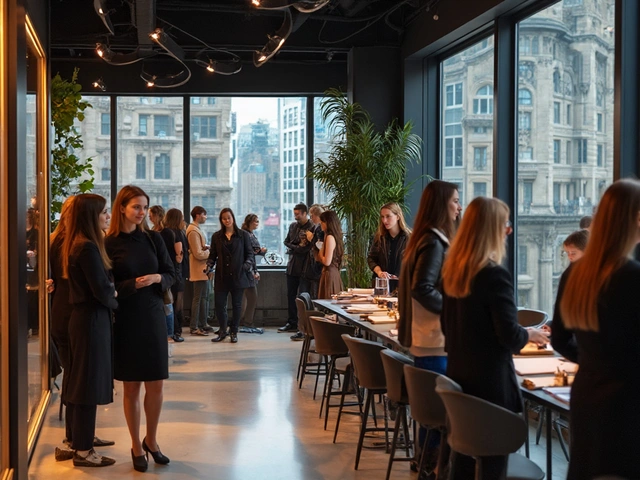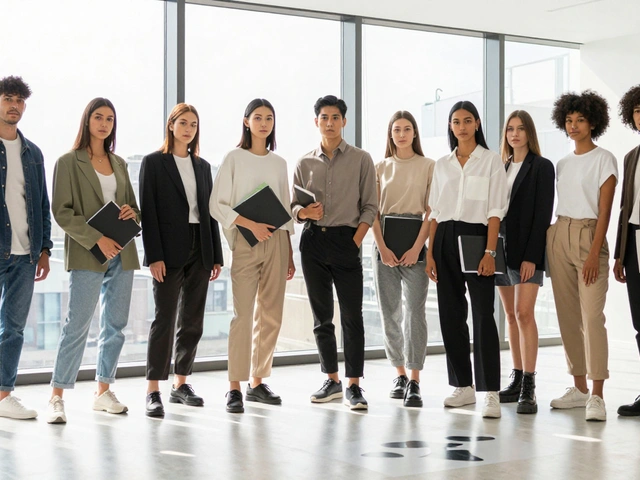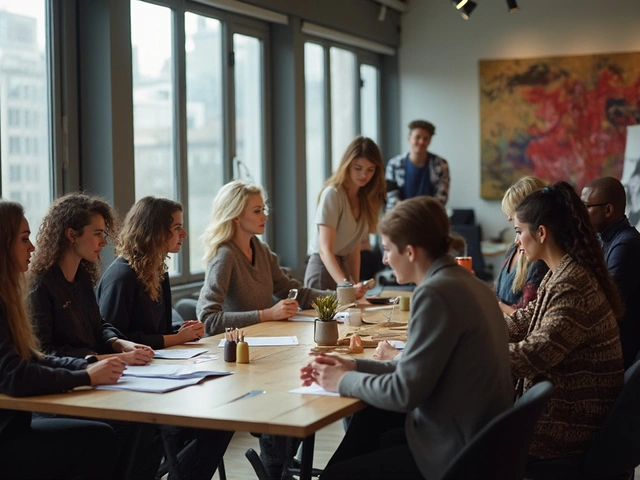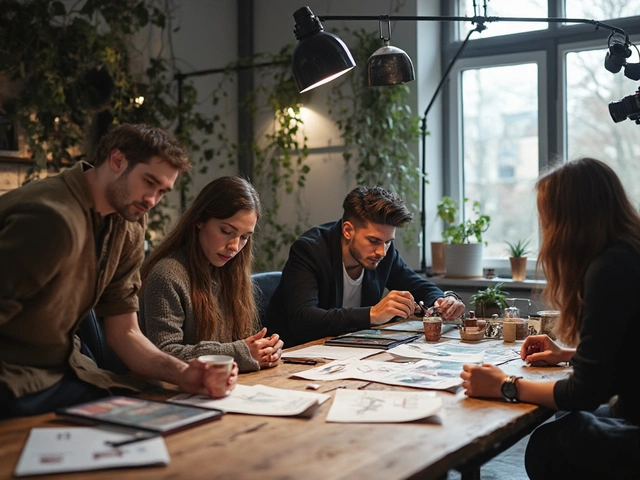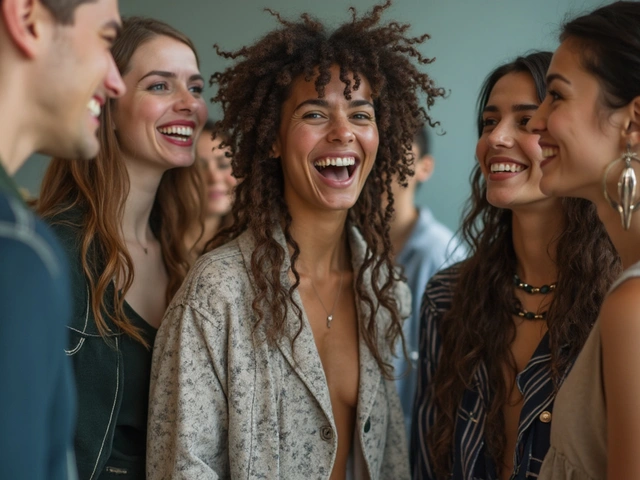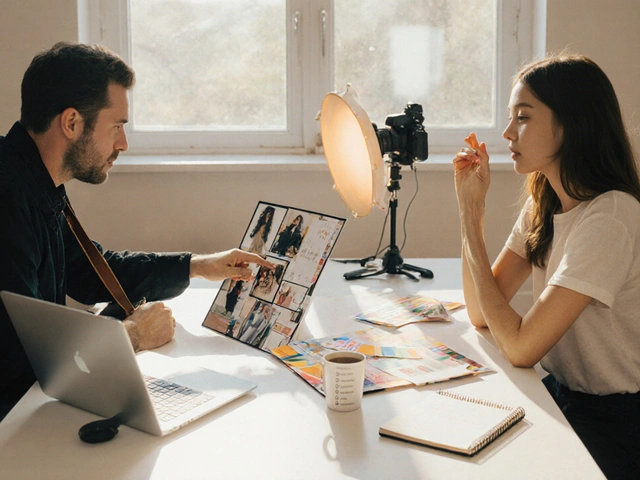If you’ve ever scrolled through an ad campaign and thought, “Hey, these models actually look like real people I know,” you’ve already seen how much diversity matters in photoshoots. People want to see themselves reflected on screen and in magazines. It’s not about ticking off a checklist—it’s about making images that feel honest and relatable. That’s how you connect with the audience and make your work stand out.
So, how do you actually pull this off? It starts with picking models from all walks of life—different ages, backgrounds, body types, and abilities. Even simple things, like letting folks wear their own hair or keep their favorite tattoos, go a long way. If you stick with the same old faces, your shots start to blur together, and nobody wants that.
Photographers and brands who get it right know this: the stories behind the faces matter as much as the poses. Don’t be afraid to ask your models about what makes them unique—sometimes it’s a quirky laugh, sometimes it’s a cultural tradition, sometimes it’s a story written in scars or birthmarks. Get curious, and you’ll capture way more than just a good angle.
- Why Diversity in Photoshoots Matters
- Defining Real Diversity: What It Looks Like
- Finding and Working With Diverse Models
- Shoot Day: Making Every Voice Shine
- Showcasing and Sharing Diverse Work
Why Diversity in Photoshoots Matters
Diversity isn’t just a buzzword. It’s the backbone of creating model photoshoot portfolios that actually connect with people. When you see ads or lookbooks with different body types, skin tones, ages, and abilities, it feels way more real, right? That’s because people want to see themselves in media, and brands switching to a more inclusive approach are seeing stronger engagement and loyalty.
Back in 2023, Getty Images reported that campaigns with diverse models got 25% more engagement than those using typical, same-old casting. Plus, a Nielsen study found that 59% of consumers said they were more likely to trust brands representing them in their visuals. So if you want people to stick around and care, you literally can’t afford to ignore this.
"Brands who embrace diversity in their campaigns build trust and foster authentic connections with consumers." — Getty Images Creative Director, Tristen Norman
You can think of it like having a wider toolbox. More backgrounds and experiences equal more authentic moments for your photography and advertising. It even boosts creativity on set, because people bring their whole selves to the camera. That energy shows up in the final shots.
This also helps break down stereotypes. When you feature real people, you challenge outdated ideas about beauty, success, or style. And if you care about growth or brand reputation, it’s no secret—better representation leads to wider reach.
| Stat | Impact |
|---|---|
| 25% higher engagement | Diverse photos in ad campaigns (Getty, 2023) |
| 59% of consumers | Trust brands with authentic, inclusive images (Nielsen, 2022) |
Long story short, diversity in model photoshoots isn’t just a trend—it’s how you stay relevant and connect with real people.
Defining Real Diversity: What It Looks Like
When we talk about diversity in a model photoshoot, we’re not just talking about checking off a few boxes, like “one person of color, one person with freckles.” Real diversity is about embracing everything that makes people different, and letting that show up on camera. It covers ethnicity, age, body size, gender identity, ability, and even personal style. That’s a mouthful, but it truly matters.
For example, back in 2024, a major fashion campaign featured models from six continents, with ages ranging from 18 to 70. No one blended into the background. Each model brought something unique—curly hair, wheelchair, vitiligo, visible tattoos, or a hijab. That’s what makes an image pop and makes the audience say: "Hey, I see myself there."
Here’s what you’ll find in a real-deal inclusive model photoshoot:
- People of various racial and ethnic backgrounds, not just the most common ones in media.
- Age diversity, so you’ll spot teens, seniors, and everyone in between.
- Different body sizes and shapes shown proudly, no hiding “imperfections.”
- Models of all gender identities, like trans and nonbinary folks, plus every type of expression.
- People with disabilities front and center—not as side notes.
- Visible traits like birthmarks, scars, natural hair, cultural dress, and more.
If you want some quick facts: a 2023 report from The Fashion Spot said that nearly 50% of all models in top ad campaigns now represent either racial or body diversity, double what we saw five years ago.
| Type of Diversity | Common Examples in Shoots |
|---|---|
| Ethnicity | Black, Asian, Latinx, Indigenous, Mixed race |
| Body Type | Plus-size, petite, athletic build, curvy, slim |
| Ability | Wheelchair users, limb differences, neurodiversity |
| Age | Teens, adults, seniors |
| Gender Identity | Men, women, trans, nonbinary, genderfluid |
It really just comes down to this: authentic representation sells, because people want to connect with brands or photographers who "get it." For anyone setting up a photoshoot today, start looking for real stories that haven’t been told yet. It’ll set your work apart in a heartbeat.
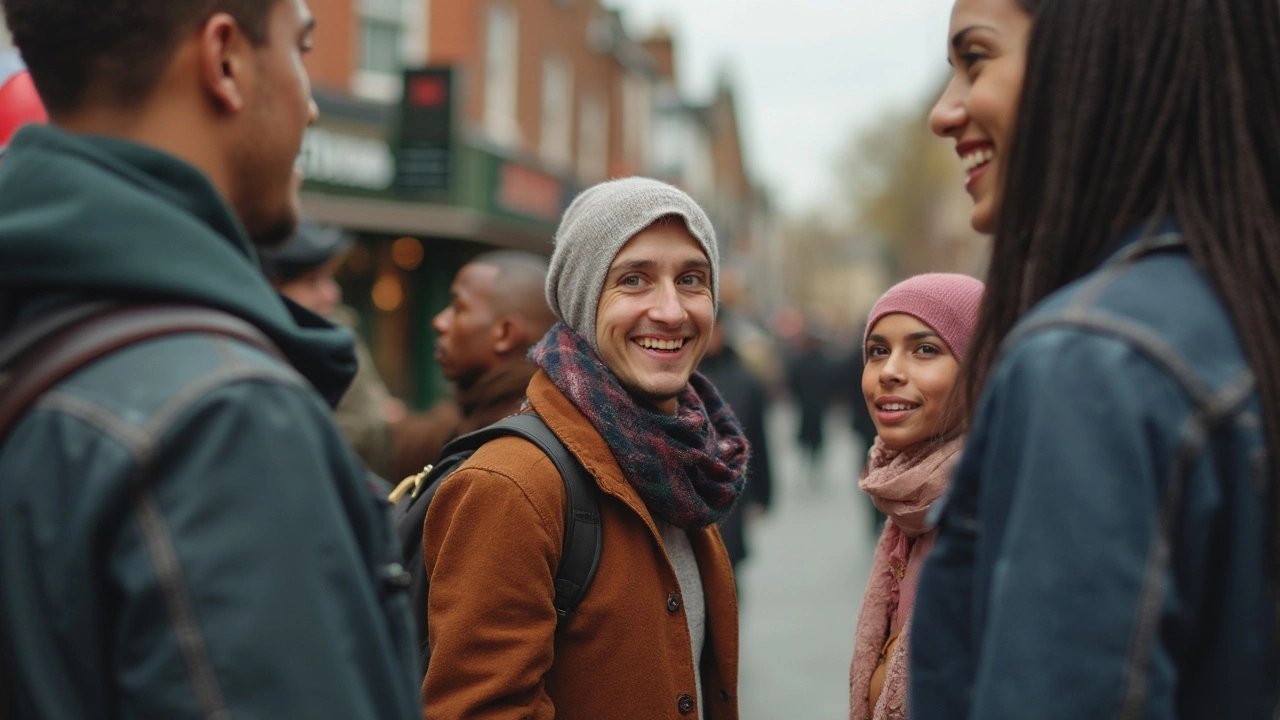
Finding and Working With Diverse Models
When it comes to capturing true diversity in a model photoshoot, you can’t just hope the right people show up. You have to go out and look for them—on purpose. Traditional agencies often show you the same types of models over and over, but that’s not what real representation looks like. Luckily, you have more options than ever now.
First move? Broaden your search. Besides well-known modeling agencies, check out diversity-focused agencies like Zebedee, which works with talent that have disabilities or are neurodivergent. Another big name, IMG Models, started the “Brawn” division to represent plus-size men. Some stateside agencies now focus on seniors, LGBTQ+ people, or people with visible differences. But don’t stop there: social media can be a gold mine. You’ll find everyday folks sharing their own style and confidence on Instagram, TikTok, and Twitter—often tagging #inclusivemodel or #diversityinmodeling. Send respectful messages to those who fit your vision—you’d be surprised how many are interested.
Next, rethink your casting call. Be clear in your shoot brief—you want models of all backgrounds, sizes, genders, ages, and abilities. Spell it out. Make your studio or set welcoming, too—offer pronoun badges, accessible spaces, and a flexible schedule for anyone who might need it. If models feel at ease, they’re way more likely to bring out their best.
Here are a few tips to keep things inclusive and smooth:
- Budget for accessibility. If someone has mobility needs, make sure your set accommodates them.
- Ask models what helps them feel comfortable—music, food preferences, quiet breaks, or whatever works.
- Give space for personal style. Let models bring elements from their culture, wardrobe, or personality to the shoot.
- Share mood boards with a wide range of inspiration so no one feels like an outsider.
Here’s a look at the growing demand for diverse modeling in 2024:
| Model Category | Increase in Demand (%) |
|---|---|
| Plus-size Models | 34 |
| Models with Disabilities | 22 |
| LGBTQ+ Models | 19 |
| Senior Models | 17 |
Working with a wider group of people means you get a bigger pool of talent—and your photos actually reflect the real world. Not only do audiences appreciate this change, but many brands have seen big engagement jumps (sometimes up to 50% more interaction on social media) from just one inclusive modeling campaign. It pays off to get this right, both for the culture and your business.
Shoot Day: Making Every Voice Shine
Shoot day is where your commitment to diversity really gets put to the test. Getting this right isn’t just about who shows up—it’s about what happens once they’re on set. The vibe matters. If models feel comfortable, you'll spot it a mile away in the photos. Start by creating a space where everyone gets a real say. Even small stuff, like letting people choose their own playlist or grab their favorite snack, sets a welcoming tone.
One thing you can’t skip: pre-shoot chats. Spend a few minutes with each model. Ask about their comfort zones—their hair, makeup, clothes, and how they want to be represented. According to a report by Getty Images, 83% of consumers want brands to feature real people, not models with filtered, unrealistic looks. That’s proof that comfort and authenticity are more than just nice-to-haves—they’re what people actually want to see.
Here’s what helps models feel seen and heard on shoot day:
- If you’ve got a makeup artist, make sure they can work with every skin tone and hair texture. Don’t assume—double check their experience.
- Share the shot list with everyone. Knowing what’s coming helps folks relax and even sparks fresh ideas.
- Encourage breaks and let people speak up if they’re tired or uncomfortable. Nobody does their best work when they feel overlooked.
- Get feedback during the shoot. Ask, “How’s this feel on your end?” or “Is there something you’d like to try?” That’s how you get those candid, natural shots that pop.
- Celebrate what makes each model different. If someone has a standout feature, let it shine instead of hiding it—think visible birthmarks, unique style, or personal accessories.
More and more brands are catching on. In a 2024 survey from The Fashion Spot, about 54% of runway models were people of color—a big step up from a few years ago. And when shoots feature inclusive modeling, both engagement and sales go up. People don’t just want good photos—they want real stories and faces they trust.
If you make space for everyone to chime in, the results will speak for themselves. You’ll get images that don’t just look good—they connect, they inspire, and they actually move the needle for your brand (and for everyone looking at your work).

Showcasing and Sharing Diverse Work
Getting great shots is just step one. The way you showcase and share those photos makes a huge difference, especially with model photoshoots focused on diversity. It’s not just about putting an image out there—it’s about telling a story people haven’t seen a hundred times.
First, think about your platforms. Instagram leads the pack for fashion and inclusive modeling. According to Statista, over 70% of fashion brands use Instagram as their main visual marketing channel. Creating a series or carousel post with behind-the-scenes clips, model stories, and the actual photos can boost engagement by 30% compared to a single shot. Don’t forget to use hashtags like #DiversityInFashion and tag your models—it helps their own communities see and share your work too.
Websites are the digital storefronts for your portfolio. Dedicate entire galleries to different aspects of authentic representation: different ages, ethnicities, gender identities, and abilities. Some brands, like Aerie and Fenty Beauty, have separate campaigns for each season’s inclusive line-up, and they link directly to behind-the-scenes interviews. This isn’t just for the feels—Aerie’s #AerieREAL campaign saw a 32% sales jump by celebrating unretouched and diverse model photos.
If you’re getting published or working with brands, push for real representation in the final edits. Ask: Does the campaign only use a couple of diverse shots as a token gesture, or is variety the norm throughout?
- Include model bios in captions, so viewers see the person—not just the pose.
- Share stories about how the shoot came together (fumbles and fun moments included).
- Get the models’ feedback on the final selects—if they’re proud to share your work, it’ll travel further.
For agency portfolios or commercial shoots, consider a quick feedback survey after every shoot. Ask questions like, “Did you feel your identity was honored in the final photos?” and actually use the answers to guide future collaborations.
| Platform | Best Use for Diverse Content | Potential Reach |
|---|---|---|
| Carousels, Reels, Model Highlights | 1B+ monthly users | |
| Brand Website | Dedicated Galleries, Blog Features | Exposure to loyal customers |
| Campaign Announcements, Team Spotlights | Professional network, good for agencies |
Here’s the bottom line: Don’t just share your most conventional shots. Put your diversity front and center. When people see real stories, they remember your work—and they trust you more. Over time, being known for honest, diverse model photoshoots draws more creative clients and talent your way.


